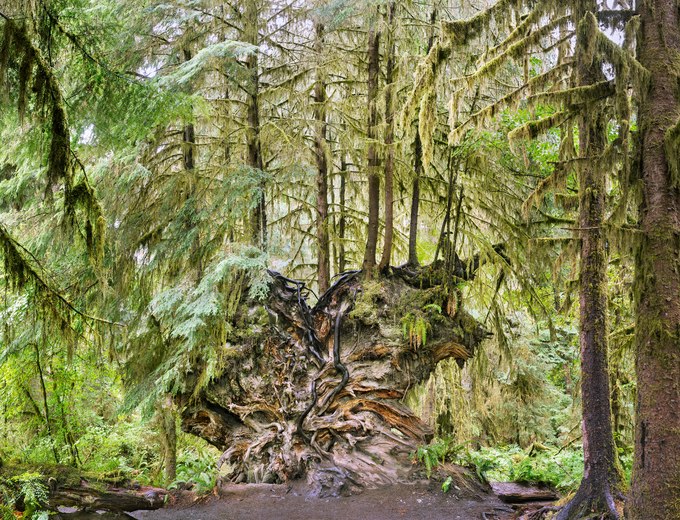The remains of a fallen tree nourish other plant life in Western Washington’s temperate rainforest. Botanists call the now-horizontal trunk of this toppled snag a "nurse log." It provides seedlings with a moist surface of decaying wood and shelters their early growth from pathogens in the soil below.
It takes about as long for a nurse log to decay as it did for the tree to mature. What appears to have been a western hemlock fell about a half-century ago; a colonnade of hemlocks has since inhabited its trunk along a line that extends a hundred or so feet behind the root ball. In a forest of thousand-year-old trees, typically, the trunk has entirely decayed by the time a nurse log's new line of trees has reached full maturity. Then, after these fully grown trees die and fall, some may serve as nourishment for the next generation.
On the banks of the Hoh River, this downed tree’s root system has been increasingly exposed as the soil that once encased it erodes. Visitors stop and photograph this fifteen-foot-tall feature in a quiet place, free of human-generated sound, absorbed by the moss that coats tree trunks and branches. Annually fed by 12 feet of rain, Sitka spruce, western hemlock, western red cedar, and Douglas fir tower hundreds of feet above the trail. Underneath, thickets of sword ferns, dense brush of vine maples, and broadleaf maple groves create a corridor of lush green flora. A meadow alongside the river opens views of elk grazing in these alluvial bottomlands, backdropped by the glacial mountains that feed it.
Location research and commentary by James Baker.

